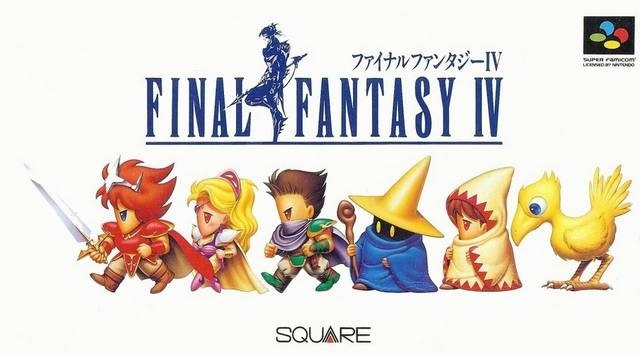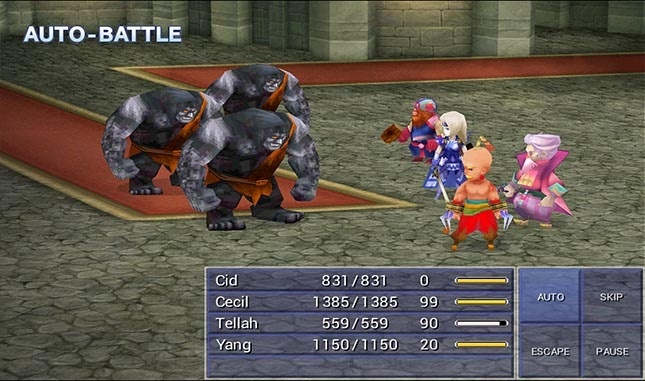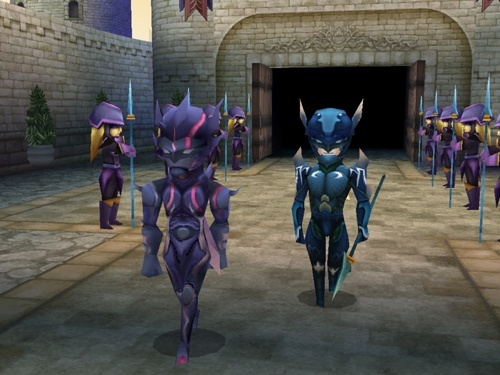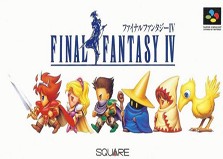
Final Fantasy IV on the Super Nintendo Entertainment System marked a huge shift for role-playing games, away from blank-slate player characters distinguished only by their names, and toward character-centric stories of true characters that players would get to know over the course of an adventure. While this may not have been the first game to do it, it was certainly one of the more popular ones, as the Final Fantasy name carried a lot of weight even back then. The result was staggering, and every RPG to come would follow inexorably in FFIV's footsteps by telling stories where seemingly real people dealt with seemingly real struggles.
The Active Time Battle system was also introduced, as Squaresoft bravely worked to redefine the battle system with each installation, to keep players from fighting battles using the same rules and mechanics. Although it began as a basic system with hidden gauges that yielded easily predictable turn orders, aficionados will spot the ATB underlying the battles, which at the time added a new twist, particularly in regard to spellcasting, that helped keep battles engaging. Would Rosa be able to cast Cure before Rubicante annihilated Cecil?

It was glorious, but not perfect. The battles had five characters taking part in each one, and this made them really slow. In more recent years, it is commonly asserted that the U.S. release of Final Fantasy IV was a localised version of Final Fantasy IV Easy-Type, but the American version actually fell somewhere between Hard-Type and Easy-Type, though it leaned toward the easy side of the scale. Given that most people didn't have access to the Internet, no one really minded at the time, and the main gripe was that the game removed players from the party to fit with the arbitrary party size limit in absurd, cheesy, and often entirely unnecessary ways.
Never before, though, had we followed a Dark Knight as he struggled with inner demons, fought valiantly, proved himself to be a good person, and redeemed himself to become a Paladin who could battle the true darkness threatening the world. These are tropes we have seen and heard thousands of times since, but never had we experienced them so expertly through a video game, and superb compositions by series composer Nobou Uematsu heightened the experience so that it was something any RPG fan could love.

Then Final Fantasy IV was re-released onto the Nintendo DS, causing some confusion among gamers. The graphics had been overhauled, and the entire game remade in 3D, but was it merely a graphical upgrade? Absolutely not! In keeping with their tradition of implementing new ways of character growth, an Augment System was added, which was a brilliant feature that completely revitalised the game. Passable voice-acting accompanied an improved (if somewhat hammy) script, a specialised summon for Rydia was thrown in, and the size of the game was effectively tripled by New Game Plus Plus and bonus bosses that provided plenty of reasons to replay a third time.
This version has since been ported (with minor changes, such as Rydia's summon Whyt not appearing in the iOS and Android versions) to mobile and PC, and it's hard to see how the game could possibly get any better. In fact, Final Fantasy IV just might be the best game available on mobile devices (until Pokémon Go came along and redefined what a "mobile game" even is)—it's that good. The only real complaint is that there is no in-game help on how to acquire the many Augments, or how the various Augments affect stat growth past Level 70 - a shout-out to the original SNES version, where characters randomly gained (or lost) stats by levelling.

So beloved was Final Fantasy IV that it is one of the few games in the franchise to receive a sequel, though radical departures from the original (and from the remake, for that matter) regarding gameplay mechanics and story structure left many uninterested. Considering that nearly every aspect of its story has since been done to oblivion, it may be hard for younger gamers to see why it was ever a big deal in the first place, but the shift from featureless protagonists to authentic characters and invention of the ATB system are not insignificant steps forward. The original's battles have not held up particularly well, as players have no control over character growth, but this problem was solved with the remake's Augment System.
Not for many years and the release of Final Fantasy VII would role-playing games take such huge leaps forward like those taken by Cecil and his friends, and the core game evolved beautifully to keep up with the times. There's no reason today to revisit the original releases on the Super Nintendo, and RPG plots progressed enough that Final Fantasy IV's is quaint in comparison, which landed the remake in strange territory. It holds up well and is tremendously enjoyable, but there's nothing in the story or mechanics that will truly astound a modern audience. As a standalone game, Final Fantasy IV is great. As a symbol of how RPGs have evolved over the decades, it is phenomenal.

 Sign In
Sign In 19.07.2016
19.07.2016  Game Details
Game Details
 Out now
Out now  Out now
Out now  Out now
Out now  Out now
Out now  Marcus J. Hopkins
Marcus J. Hopkins 
 Link to this post:
Link to this post:  Subscribe to this topic
Subscribe to this topic Features
Features





 Top
Top

